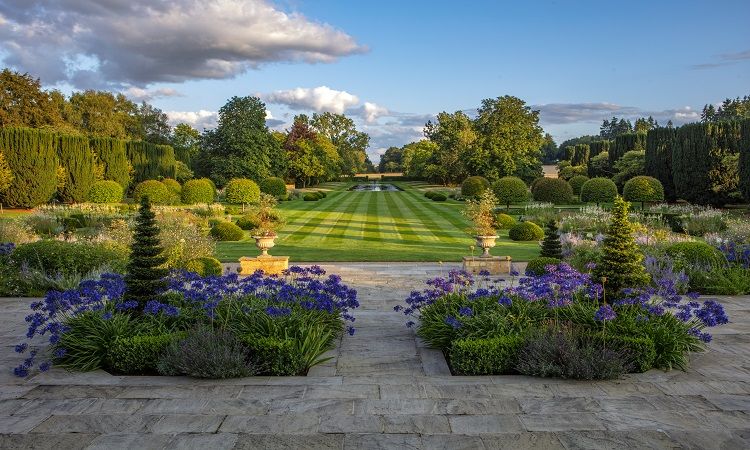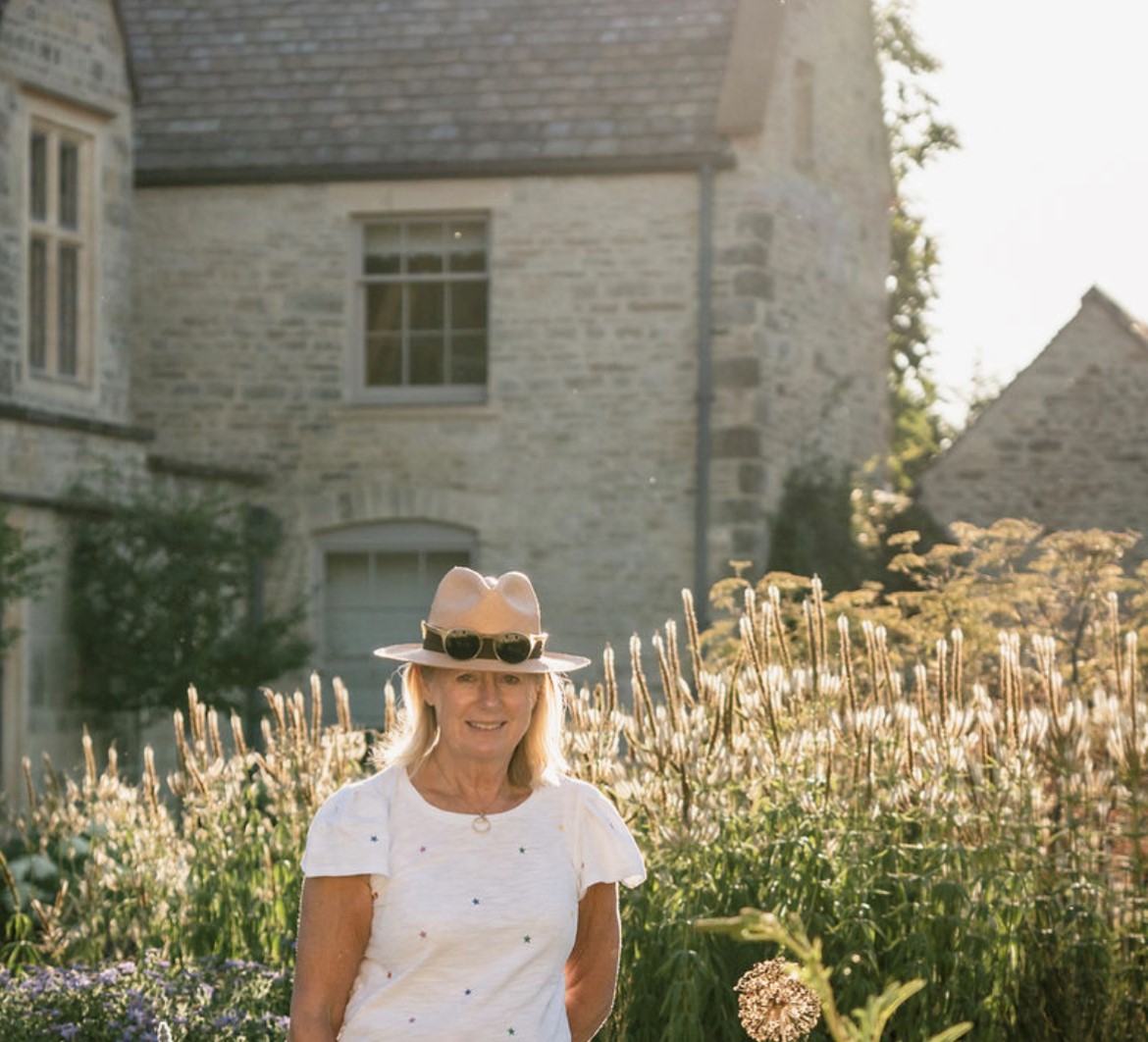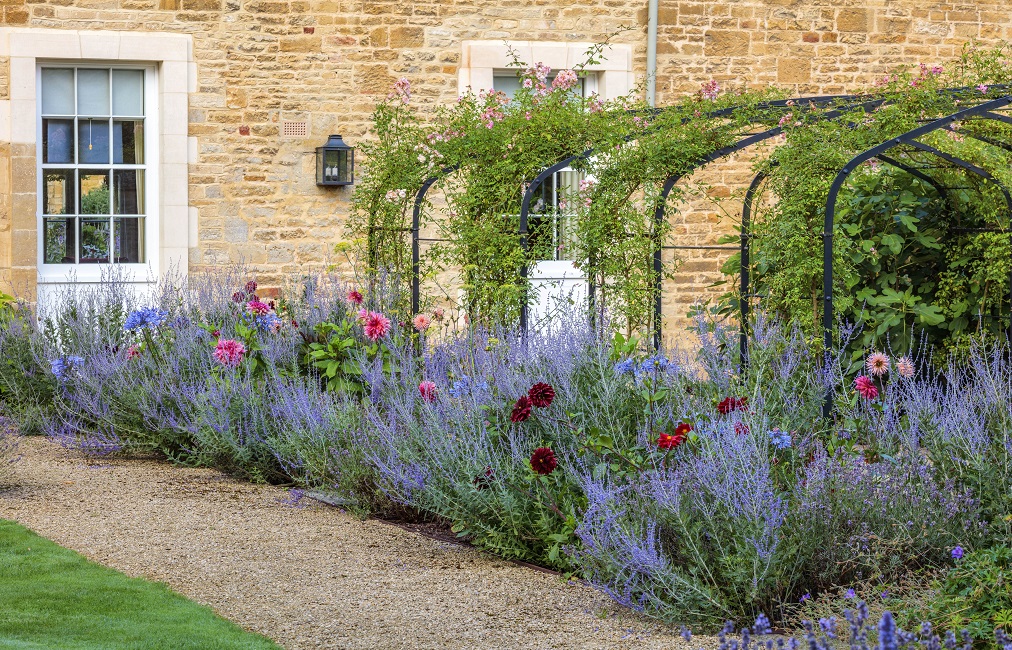
The beauty of Britain’s palatial estates
Over the years, our National Estates & Farm Agency team have had the privilege of selling some of this nation’s finest estates. We’ve picked some of their favourites, both past and present.


Over watering and under watering. Perennials and annuals. Direct seeding and transplanting. Whether you have just bought a house with a garden for the first time, or your new garden is just slightly bigger than what you are used to, deciding how to put your own stamp on your outdoor space can seem daunting – and you are likely to have lots of questions.
To help shed a light on all things outdoors, we asked Angel Collins, of Angel Collins Garden Design, to talk about where to start.
 Hi Angel. So, where do I begin with my garden?
Hi Angel. So, where do I begin with my garden?
If you have got a blank canvas and you are not sure what you like, a good start is always to look at gardening magazines, books or Instagram/Pinterest to help inspire you. Lay out all the pictures that catch your eye, or save them on your phone, and you will find common threads which can help to create a vision.
Aside from picture-perfect photos, it is important to also consider the practicalities. Think about how you are going to use the garden. Do you want a vegetable patch and compost area? An outdoor kitchen or maybe even a party barn? What about a play area for children? Make sure you are ticking these boxes before worrying too much about colour schemes!
We are into spring now, what can I do to enjoy my garden this year?It is not too late but hopefully you will have inherited well-looked-after borders – ideally, they will have been mulched in order to keep the weeds out and the moisture in. If so, you are good to go and there is plenty that you can plant or sow now. For example, you can still plant container grown shrubs or you can direct sew annuals such as nigella, sweet peas, sun flowers and cosmos into bare areas. These are all easy to grow outside once the last frosts are over - which is usually mid-May.
Do not forget that anything you sow or plant must be watered every day for three weeks – apart from the days that it rains.
Looking ahead to next year in your garden, it is good to think about making your own mulch as soon as possible. It is fantastically easy – you just need to compost everything you can from the garden, along with your raw vegetable peelings from the kitchen. The RHS has a helpful ‘how to’ guide if you want to know more.
Do you have any recommendations for those who are renting their home?If you are renting you may be less inclined to invest too much time or money into your garden, however this does not mean that you cannot make the most of your outdoor space. I would suggest focusing on creating gorgeous, colourful pots – these are easy to move or take with you if needed.
Tulips and other spring planting will start to fade at the end of May. Once this happens, take them out, replenish the soil and replant with your summer planting. This is a fun and creative way to spend a weekend afternoon, so it can be nice to simply head to your local garden centre to see which flowers catch your eye. Choose a tall central plant and then surround it with smaller filler plants and trailing plants to create a well-rounded pot. A good rule of thumb is to count how many plants you think you will need, and then double it! Remember to deadhead, water and feed your pots every week.
 Credit: Clive Nichols Photography
Credit: Clive Nichols Photography
How can I encourage wildlife into the garden?
One of the best things about having a garden is seeing all the wildlife – such as butterflies, birds and bees. One of the simplest ways to do this is by planting flowers with open heads – for example single dahlias, rather than double – as these are easier for pollinating insects to feed from. Plant diversity is also incredibly important. It is worth reading the RHS’ Plants for Pollinators list to decide what is best for your garden, but essentially, just try to plant plenty of different things in order to support as wide a variety of insects and butterflies as possible. Also, where possible, it is great to have water in the garden, especially a pond or a bird bath.
Do you have any advice for bringing in year-round colour?
For year-round colour, bulbs are a good start. The yellow aconites seem to pop up as soon as the Christmas tree comes down. Then the snowdrops start, followed by narcissi/daffodils, fritillaries and tulips. Then the roses start budding up, the irises signal the start of summer and an array of perennials and dahlias will take you through to November.
If you have these flowers in your gardening repertoire, you are almost guaranteed year-round colour.
Any final, quick tips?
It is important to enjoy your garden, so keep it simple to begin with. Get your structure in first with evergreen shrubs and ornamental trees - crab apples are wonderful for the birds. And then get to know your garden over the year and start to plot the various areas. Think about scale and proportions and most importantly, make sure your soil is healthy - avoid chemicals and artificial fertiliser, and make your own plant food from nettles and comfrey by soaking the leaves in water.
Think about the provenance of any hard landscaping elements and try to buy from your local quarry. Sustainability is key.
Thanks so much, Angel!
Inspired? Read about this Wiltshire home with gardens curated by award-winning landscape designer Tom Stuart-Smith here, as well as five homes for sale with glorious gardens.
Header – Credit: Clive Nichols Photography